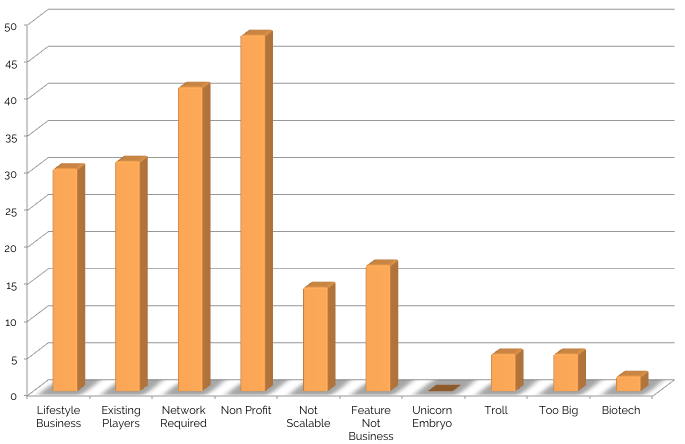 Y Combinator recently launched a new initiative where they asked the Hacker News community to identify promising startups to fund via the YC fellowship program. This program provides US$20,000 to very early/idea stage startups to build their prototype/MVP. Potential participants were asked to post their concept to Apply HN and members of the HN community were asked to discuss the concepts and make ‘nice’ suggestions. The two best public applications will be funded by YC at the end of the month.
Y Combinator recently launched a new initiative where they asked the Hacker News community to identify promising startups to fund via the YC fellowship program. This program provides US$20,000 to very early/idea stage startups to build their prototype/MVP. Potential participants were asked to post their concept to Apply HN and members of the HN community were asked to discuss the concepts and make ‘nice’ suggestions. The two best public applications will be funded by YC at the end of the month.
While a very interesting experiment in itself (I really do applaud YC for actually trying new ideas in the VC world), the most fascinating aspect of this experiment is it give us an all too rare access to the VC pitch firehose. The investment community rarely (never) shares the raw data of what pitches they see come across their desk and we are left only seeing the end product (the startups they fund). As a founder of a startup you really have no way of knowing what competition you are facing for investor time and dollars. Is your startup the next great opportunity or just another lost cause doomed to failure?
To answer this question I did a quick and dirty analysis of all 194 applications (minus my own) as of 11.30am 12th April AEST. I read carefully through every application and all the comments (this took me a bit over 6 hours) and sorted the applications into one of ten categories (see below) on the basis of their investment potential (Figure 1). Many startups fell into more than one category (e.g. non profit and network required) and in these cases I sorted them on the basis of what I believed was the primary category. After completing the analysis I randomly selected 25 applications from the pool and blindly reclassified them. The two classifications agreed in every case giving me faith that while my classification process may be invalid, it is at least replicable.
Results
Non Profit (48)
These startups were either explicitly not for profit, or implicitly not for profit in the sense that there was no way of them ever making a profit from their product or service. Many were attempts to scratch an itch of the founder(s), but none in this category appeared to answer the most fundamental question any investor will ask – how are you going to make money?
Network Required (41)
This was the second largest category. There were many startups proposed or begun that would be great business if the founders could get 10 million users — the problem is they all had no way to get to this point other than to hope if they build it people will come. I am highly sceptical that it is possible to build a mass market network based business today and most niches markets still exploitable are too small to offer the returns the investment community requires. It is a huge task to build a new network business – I am not saying it is impossible, but it is going to be very hard convincing investors you can do it and make a profit unless you have something really compelling.
Existing Players (31)
A surprising number of application were me-too startups with one or more strong existing competitors dominate the market and where the proposed offering was not at least 10 times better (the comments were great for drawing this out). It is fantastic to have a product where the market already exists since you don’t need to create a market, but your product needs to be significantly better if you want customers to switch. Just being a little better than the competition is not enough.
Lifestyle Business (30)
These I classified as having the potential to be good businesses, but not ever make the sort of returns required by the VC investor community. There were quite a few great startups and ideas in this category, but the accessible market (even allowing for later expansion) is just too niche. I am personally highly supportive of founders developing lifestyle businesses, but if your startup can only ever make a profit of a few million dollars a year (if everything goes right) it won’t interest most investors.
Feature Not Business (17)
In this category there were lots of great ideas, but they just weren’t big enough to sustain a business. You don’t want to build your business providing something that can be easily replicated by one of the big players.
Not Scalable (14)
It is fine to do things that don’t scale when you are building your startup, but if your processes can never be automated and will always need highly skilled labor the business will not be able to expand into a billion dollars business. These types of startups can make great lifestyle businesses if the margins are high, but trying to develop a non-automatable technology business which only offers low margins is a slow and nasty way to go broke.
Too Big (5)
These were ideas (some great) that were just too big for the YC fellowship program. If your startup is going to need $100 million to create the prototype then you are going to be in for a hard slog finding investors who will back you. The way to approach these sort of ideas is the way Elon Musk build Space X – start small in other businesses and as you gain credibility and success investors will then be willing to back you in your big ideas. Dream big, but take small steps.
Troll (5)
Not all applications were serious proposals, although some were amusing.
Biotech (2)
There were a couple of biotech/medical device startups in the list. This industry is notorious for losing money and unless you are very knowledgeable one that should be avoided as an investor.
Unicorn Embryo (0)
These were startups that had the potential to be worth over a billion dollars if everything went right. They needed to be tackling a multibillion dollar market in a technologically innovative manner and have a plausible plan on how to grow and defend this market. This is the sort of startup investors want to back. Unfortunately there were none.
I should add for conflict of interest reasons my own application was not assessed. I will leave it to others to decide what category it should be in.
Conclusions
I was most surprised to see how little emphasis applicants placed on eventual profitably. Yes it is fine to make a loss when launching, but you have to have a credible plan for how you will make a profit at some point in the future. I was also surprised to see how many network requiring applications seemed to have no viable plan for how to grow their network beyond making something cool and hoping the masses will come. Network based businesses are so valuable because they are so hard to create.
All in all this experiment has been very valuable and I thank YC for running it even if they don’t find a unicorn embryo to invest in.
Update
Apply HN ended with a short list of 20 applications and interestingly all 20 were from the 194 I reviewed here (there were a total of 343 applications). While the HN voting selection process ended in controversial circumstances over Pinboard, I was very honoured to have made the shortlist with my idea only application – TruSert.
